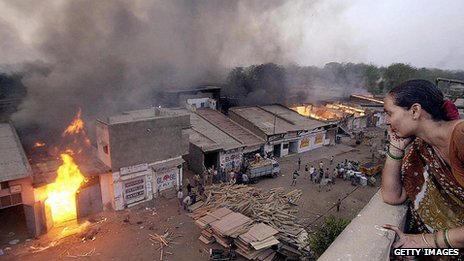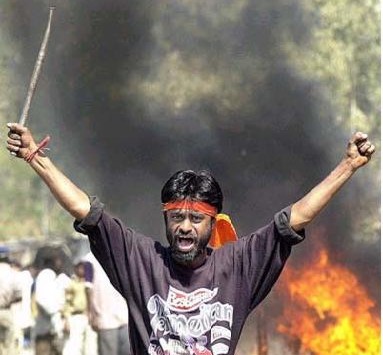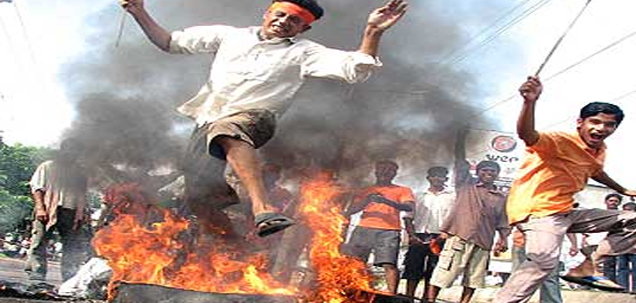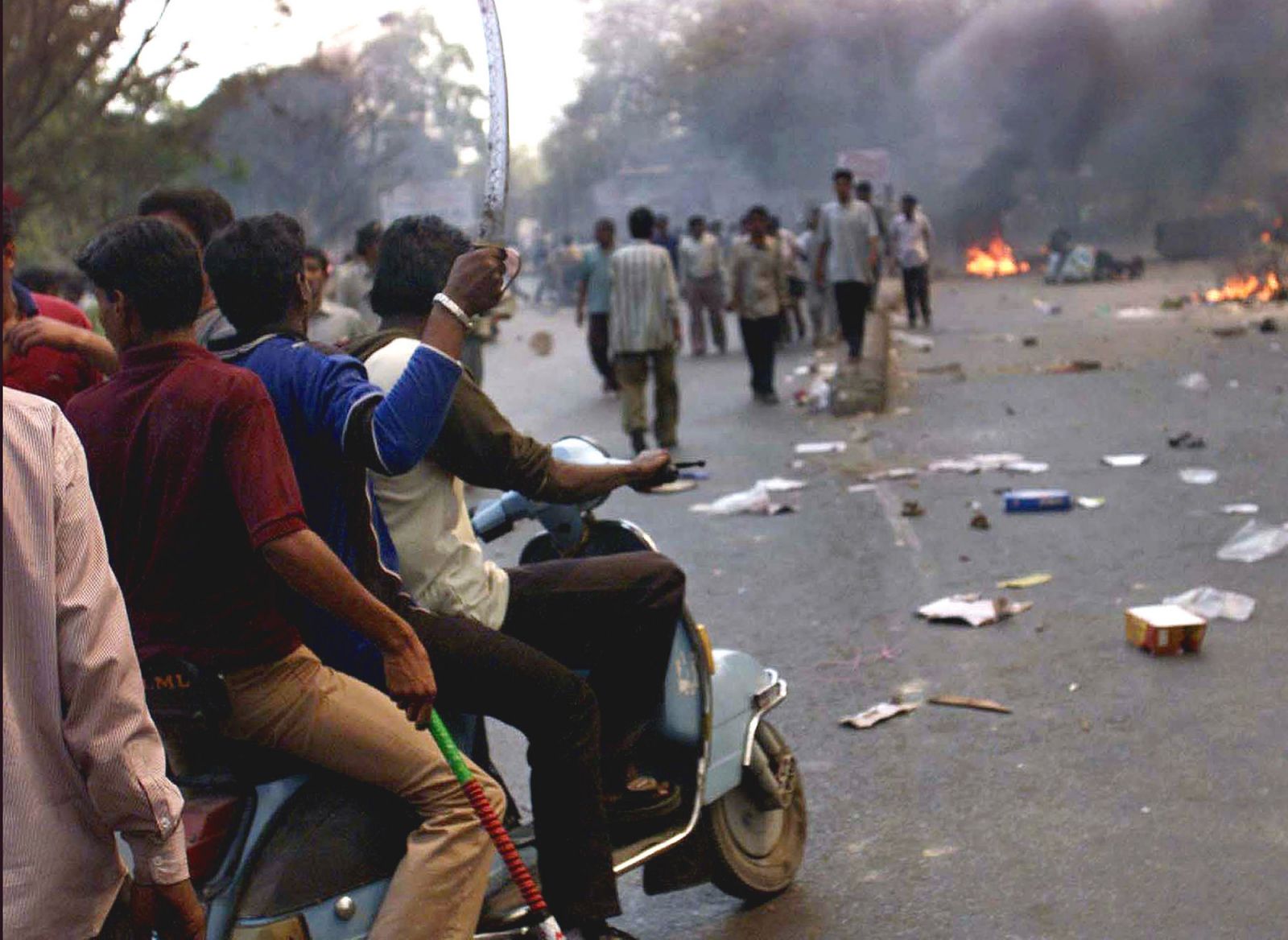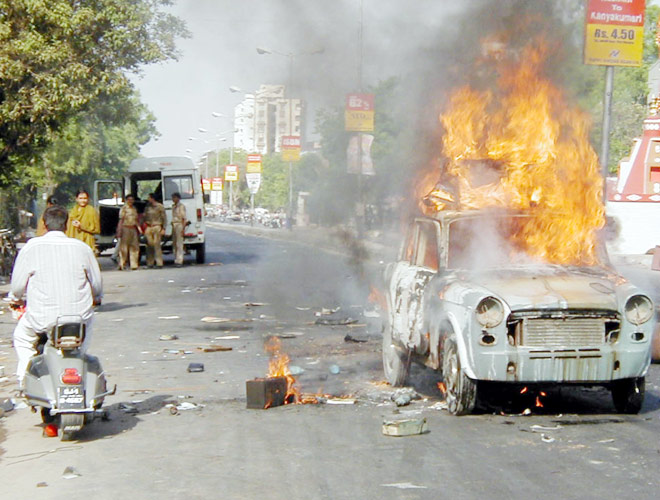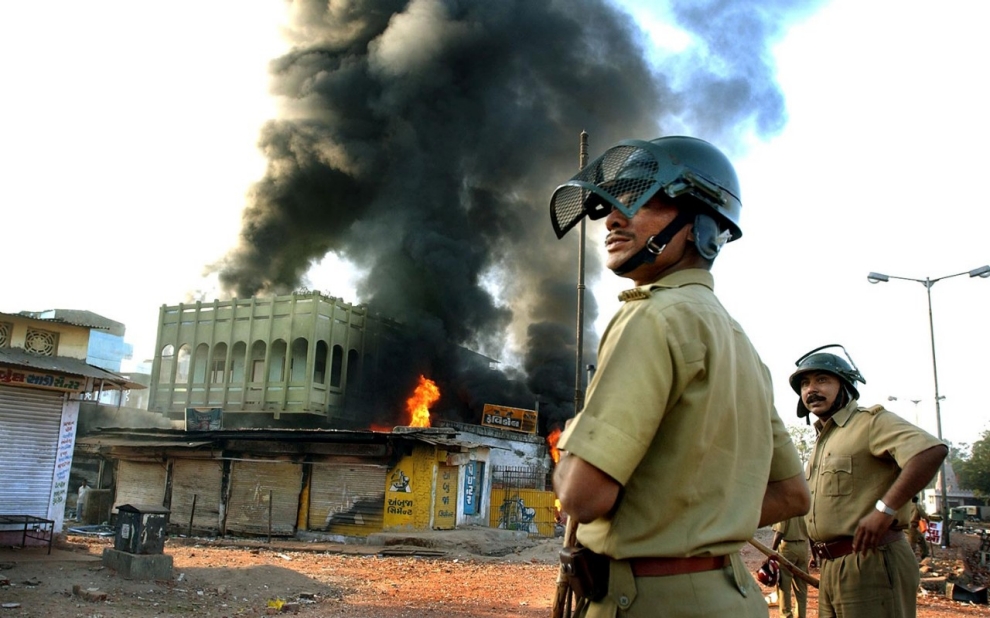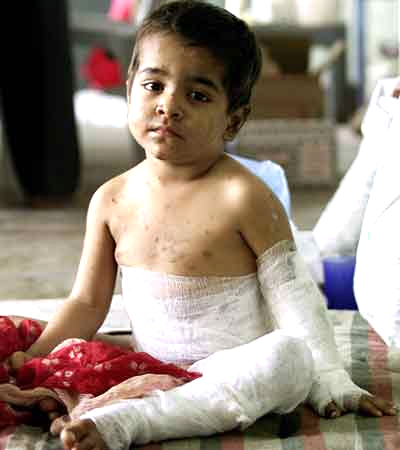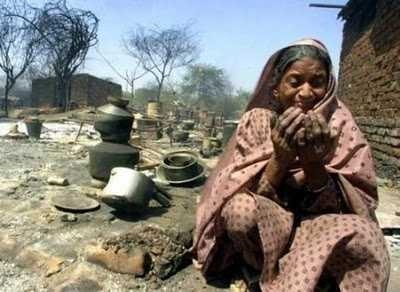
Adistinct, tragic and ghastly feature of the state sponsored carnage unleashed against a section of the population, the Muslim minority in Gujarat, was the systematic sexual violence unleashed against young girls and women. Rape was used as an instrument for the subjugation and humiliation of a community. A chilling technique, absent in pogroms unleashed hitherto but very much in evidence this time in a large number of cases, was the deliberate destruction of evidence. Barring a few, in most instances of sexual violence, the women victims were stripped and paraded naked, then gang raped, and thereafter quartered and burnt beyond recognition.
While the large number of cases of sexual violence perpetrated during the statewide carnage in Gujarat is shocking, the trivial and dismissive manner in which this chilling pattern evidenced all over the state was dealt with by the CM and his cabinet, the
authorities as a whole in Gujarat and, worst of all, by ministers in the government of India, make it doubly so.
The Tribunal notes with concern and outrage the shocking remarks made by the union defence minister, Shri George Fernandes on the floor of the Lok Sabha during the debate on the Gujarat carnage. He said, “There is nothing new in the mayhem let loose in Gujarat… A pregnant woman’s stomach being slit, a daughter being raped in front of a mother aren’t a new thing.” Such things, Shri Fernandes said, have been happening for 54 years in India and happened even on the streets of New Delhi in 1984. (Lok Sabha debate on Gujarat, April 30, 2002, reported on May 1 in The Hindu, The Indian Express, the Deccan Herald and The Times of India.)
The Tribunal recorded with pain the statements of women from all over Gujarat who had either themselves been subject to sexual violence or were direct witness to it. Many of the over 33,000 children forced to live as refugees in relief camps throughout the state were also witness to the most debased and brutal forms of violence. They were mute witnesses to gross gender crimes perpetrated on their near and dear ones — sisters, mothers, aunts and even grandmothers — with gory and military precision, evidence of some sick minds and a vicious ideology. The Tribunal shudders to think of the impact of this on young and impressionable minds.
Women victims of the carnage from Saijpur Patia, Naroda, Chamanpura, Behrampura, Danilimda, Gomtipur, Vatwa, Narol, Shah–e–Alam, Millatnagar and Bapunagar in Ahmedabad city deposed before us. Not only had they been victims of violence that took the lives of their near and dear ones, their dignity was made a special target and their homes and belongings, collected painfully over the years, were looted and then destroyed. They have been forced to become refugees in their own homeland.
In Saijpur Patia, Naroda, on February 28, a mob of around 25,000 surrounded the Muslim areas at nine in the morning. They instigated the attacks by pelting stones at the residents and throwing acid and petrol bombs at them. Thereafter, they forcefully entered the lanes, shouting slogans against Muslims, implying that they are terrorists and that they should not be allowed to live in this country. The mobs were armed with sharp swords, spears, tridents, chemicals, petrol cans, kerosene and private firearms. The mob then went on a rampage, looting and burning houses.
They then started killing people, first cutting them up with swords and then burning them. When the residents of Saijpur Patia, Naroda, tried to escape, they were subjected to the mass rapes of their sisters, wives, mothers and daughters. The helpless men — brothers, sons, fathers and husbands — were first humiliated and then killed.
The police, instead of firing on the assailants and protecting lives, misdirected the terrorised people and lead them towards armed mobs waiting for assault. Those who ran in the direction indicated by the police are no longer alive.
According to the evidence recorded by the Tribunal, the leaders of the mobs (many of whom have been identified) even raped young girls, some as young as 11–years–old. The young girls were made to remove their clothes in front of 1,000–2,000 strong mobs who humiliated and terrorised the girls. Thereafter, they were raped by 8–10 men.
The sinister aspect of these gender crimes is that they have been led and directed by elected representatives and prominent leaders of the BJP, RSS and VHP.
After raping them, the attackers inserted sharp swords, knives or hard objects into their bodies to torture them before burning them alive. In the many bouts of communally incited pogroms that have taken place in different parts of the country, never has there been this depth of perversion, sickness and inhumaneness. Even a 20–day–old infant, or a foetus in the womb of its mother, was not spared. They flung babies in the pyres that they had prepared. They cut up people, threw then in a well known as ‘teesra kuva’ and then burnt them.
The police supported the mob during the assault by shelling tear gas shells on the hapless Muslims. They also opened fire on men when they were trying to defend the women in the area. The State Reserve Police was very complacent and indifferent saying, “We have been given orders to do nothing for 24 hours in Naroda.” Women pleaded with the police and the SRP to stop acting partially and save the children at least. They begged before these policemen, laying their children at their feet, but it made no difference to them.
The sinister aspect of these gender crimes is that they have been led and directed by elected representatives and prominent leaders of the BJP, RSS and VHP. This means that the dominant political leadership of our times is actually creating or displaying role models that glorify gender crimes against women. Can any civilised society witness this without finding an urgent need to punish those guilty and making a determined effort to purge public life of these perversions?
In the attack on February 28 on Gulberg Society, Chamanpura, Ahmedabad, where a former Congress member of Parliament was a specific target, there were at least 10–12 cases of girls and women who were gang raped, assaulted with swords and rods and quartered before being burnt to ashes.
Similarly, on March 1, in Fatehpura village outside Sanjeli, and in Morwa in the Panchmahal district, women were gang raped by mobs. Fatehpura is one village where, among the survivors, are many women victims of gross gender crimes.
A womens’ fact–finding report sums up the usual procedure: “..rape, gang rape, mass rape, stripping, insertion of objects into their body, molestation… a majority of rape victims were burnt alive.”
Before they were finally killed, some were beaten up with rods and pipes for almost an hour. Before or after the killing, their vagina would be sliced, or would have iron rods pushed inside. Similarly, their bellies would be cut open or would have hard objects inserted into them. A 13–year old girl, had a rod pushed into her stomach, and was then burnt. A mother reported that her three–year–old baby girl was raped and killed in front of her, while elsewhere daughters reported on the rapes of their mothers, now dead. Kausar Bano, a young girl from Naroda Patiya, was several months pregnant. Several eyewitnesses testified that she was raped, tortured, her womb was slit open with a sword to disgorge the foetus which was then hacked to pieces and roasted alive with the mother.
In the third round of violence from April 2 to April 5, the minority community living in Mariam Bibi ki Chali and Chotalal ki Chali constantly faced the danger of getting killed and burnt. Shri Narayan Modi, the head constable of the ‘D’ staff, leading a posse of policemen and some jawans of the Rapid Action Force (a specialised wing of the police, specially created to combat communal conflict), attacked these areas, severely beat up the residents with lathis and the butts of their guns and then stripped themselves in order to insult and humiliate them.
This behaviour of the police towards women of the minority community had also been recorded in some incidents of the post–demolition violence that rocked Ahmedabad in 1992. But the scale and frequency of such shocking misconduct during the state sponsored carnage this time makes it most deplorable. It shows not just lawless behaviour by the police, but an identification with the ideology of hate and humiliation that instigated this and earlier bouts of violence against the minority community in Gujarat.
Evidence before us shows how, especially in the Gomtipur area of Ahmedabad, the police even molested elderly women. Women managed to escape a worse fate only by constantly escaping to the relief camps. Once they had left the area to protect their lives and dignity, the assailants burnt down their houses. The police in Gomtipur regularly used this trick of stripping to make women flee the area, so that they could detain the men and the boys and destroy property, since women were the ones who were trying to defend their homes and the lives of their husbands and sons.
Evidence placed before the Tribunal shows that in the later phases of violence, even in Vadodara city, vulgar and brutal behaviour of the police with women of the minority community was recurrent. Evidence on record shows that from March 15 onwards, the Vadodara police played a prominent role in terrorising Muslim residents in their localities through combing operations and illegal arrests. Women, in particular, were subject to oppressive forms of harassment in their homes, especially when their men had either fled or were away.
One case of a pregnant woman, about to deliver, as narrated by her mother, was especially poignant. On the night of April 30, she was brutally beaten with lathis and the butts of rifles, especially on her breasts. Though she had carried the baby to full term, this episode, in all probability, caused her to go into premature labour the next day and she delivered. With tears in her eyes, her mother recounted to the Tribunal how, when breast feeding her new born infant, while milk flowed from one breast, blood oozed out from the other, scarred by the beatings from the merciless Vadodara police.
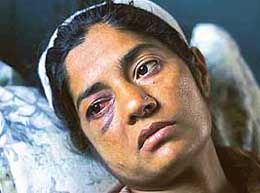
Apart from physical beatings, Muslim women in localities of Vadodara were subject to sexual and communal threats; policemen used highly abusive language before they vandalised their homes.
Apart from physical beatings, Muslim women in localities of Vadodara were subject to sexual and communal threats; policemen used highly abusive language before they vandalised their homes. The Bahar colony at Ajwa Road, Rain Bassera, Machchipith under the Karelibaug Police Station, as well as areas under the jurisdiction of the Panigate Police Station were especially vulnerable to this sexually perverse and violent behaviour of the Vadodara police.
Evidence before the Tribunal shows that women have suffered the most bestial forms of sexual violence, including rape, gang rape, insertion of objects into their bodies, stripping, and molestation. A majority of the women who suffered this violence were then burnt alive. Amongst the survivors, many have spoken about the assaults but many have been silenced, for fear of further attacks and for fear of censure from their own families and community.
These crimes against women have been grossly underreported and the exact extent of these crimes in rural and urban areas, has yet to be grappled with. These attacks have been carried out in the presence of, in many instances even at the behest of, the police and other state authorities.
In Gujarat, the degree of violence and sexual crimes against women reached unprecedented levels. Women and entire communities have been so traumatised and silenced that the full extent of this has yet to be realised. Mental trauma as well as insecurity of an extreme form are issues that need to be dealt with. The ineffectiveness and insensitivity of our criminal justice system, particularly when it comes to sexual and other crimes against women, renders the victim, her family and even the entire community in cases of mass and planned crimes of this sort, especially vulnerable. These crimes call for not simply a re–orientation in thinking and values in the matter of justice to the victims and punishment to the guilty; also urgently needed is psychological and trauma counseling for some sort of a healing process even to begin.
That sexual crimes against Muslim women took place on such a large scale in post–independent, democratic and secular India is shocking in itself. What is far worse is the shameful trivialising or denial of these crimes by agents and representatives of the central and state governments and outfits like the BJP and its affiliates like the RSS, the VHP and the Bajrang Dal. This amounts to a virtual condoning of such gross crimes against women.
Attacks on children were used as instruments of terror. In what is surely the most perverse dimension of the violence, children were used to torture and terrorise victims. In one particularly tragic incident in Tarsali, an old Muslim man was shown the head of his beheaded son on a tray before he was himself brutally slain.
Archived from Communalism Combat, November-December 2002 Year 9 No. 81-82

